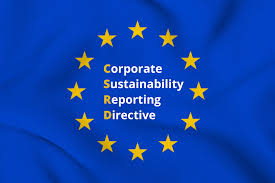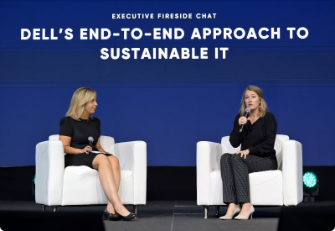
Over the past two years, I’ve interviewed more than 100 executives on tech innovation. Key insights emerged. But one stood out: sustainability is no longer a “nice to have.” It’s now a core business strategy. That’s the focus of my inaugural, exclusive report: Decisions That Define: Executive Strategies Driving Corporate Sustainability.

Why 2025 is a Defining Year
This year marks the EU’s Corporate Sustainability Directive (CSRD) requiring standardized ESG reporting. Thousands of companies are impacted. Even those outside the EU – if they maintain significant European business operations. Meeting these mandates is a matter more complicated than just tracking a business’s own emissions.
Supply Chain: The Real Carbon Challenge
That’s because Scope 3 emissions are indirect. They include suppliers, logistics and product use. For many tech firms, Scope 3 emissions are toughest to track. Palo Alto Networks found that 75% of its emissions come from suppliers and partners. The company is forming deep partnerships with utilities and data centers to cut emissions at the source, targeting a 90% reduction by 2040.
Driving Innovation, Efficiency and Profitability
Sustainable advancements in infrastructure not only mitigate carbon footprints. They can also be cost-effective and more productive. Examples include:
- Dell’s liquid cooling technology reduces energy use while enhancing server performance.
- Hugging Face’s small AI models deliver 95% of standard performance using 70% less energy.
- Delphix’s data virtualization reduces storage needs by eliminating redundant copies, lowering power demand and hardware waste.
Circularity Gains Traction in Tech

Frequent device upgrades may remain common, but efforts to extend material use are expanding. The report reveals a rising movement toward sustainable hardware, refurbishment, and reuse initiatives.
- Pure Storage’s “Evergreen” architecture extends hardware lifespan by enabling component upgrades without full system replacements.
- HP Renew Solutions refurbishes over three million devices annually, keeping IT equipment in use and cutting material waste.
- Human-I-T repurposes discarded electronics, diverting millions of pounds from landfills while providing tech access to underserved communities.
Workforce Development Gap
Despite forward momentum, challenges remain. The research identified a notable representation gap. For example, women currently hold only 22% of AI professional roles. Organizations like MIA AI and Women in Climate Tech are addressing this disparity. There’s still work ahead when it comes to recruitment for tech roles. Boston-based Climate People is actively seeking to expand opportunities for diverse talent in climate tech, focusing on roles in software, data science, and AI-driven sustainability.

Looking Forward
Offering a comprehensive guide on how today’s technology companies are successfully implementing sustainability into their core business models, this report illuminates techniques to drive both environmental resilience and competitive advantage. The complete analysis of these findings, Decisions That Define: Executive Strategies Driving Corporate Sustainability, is available at ecotechreport.com.











